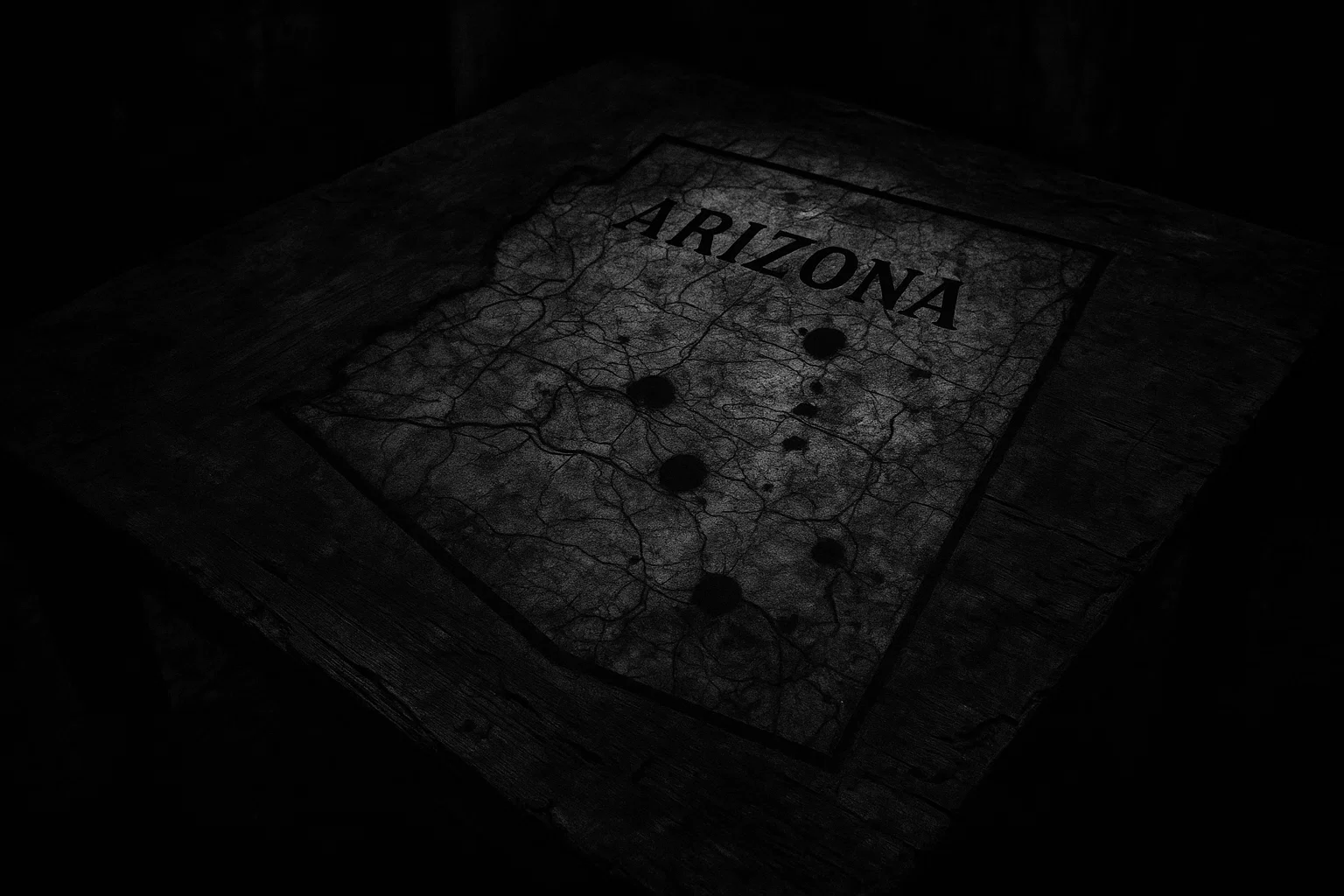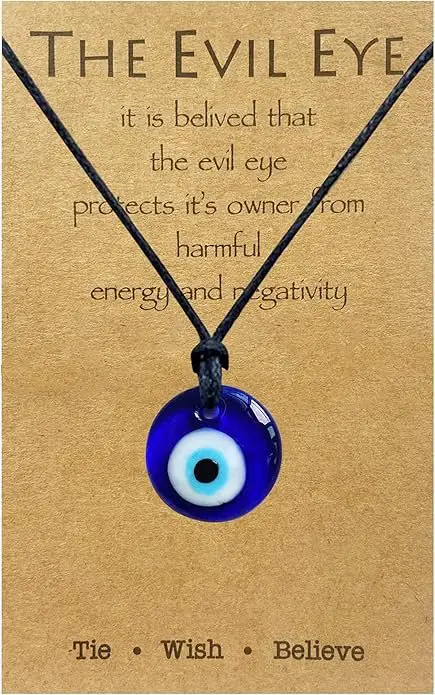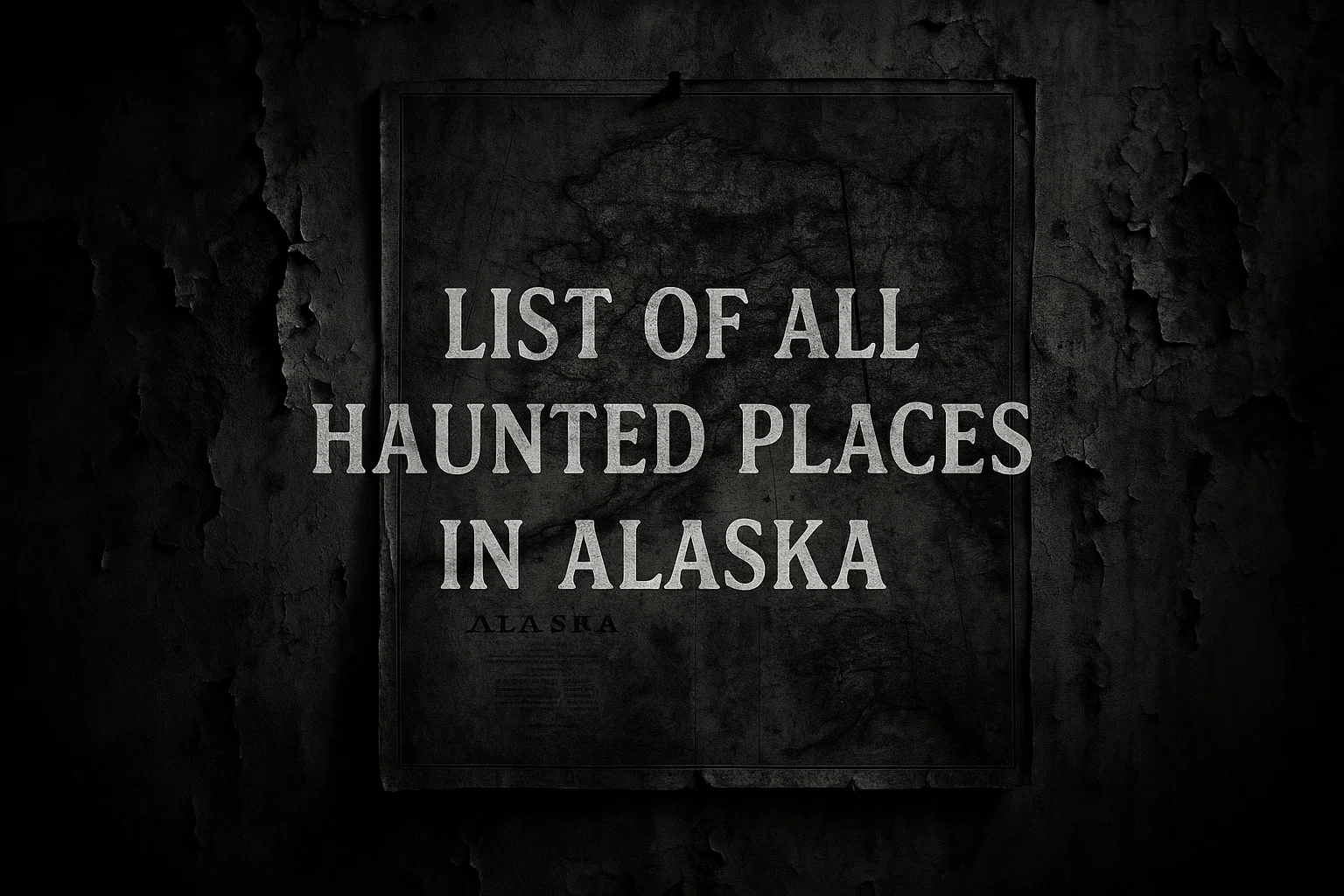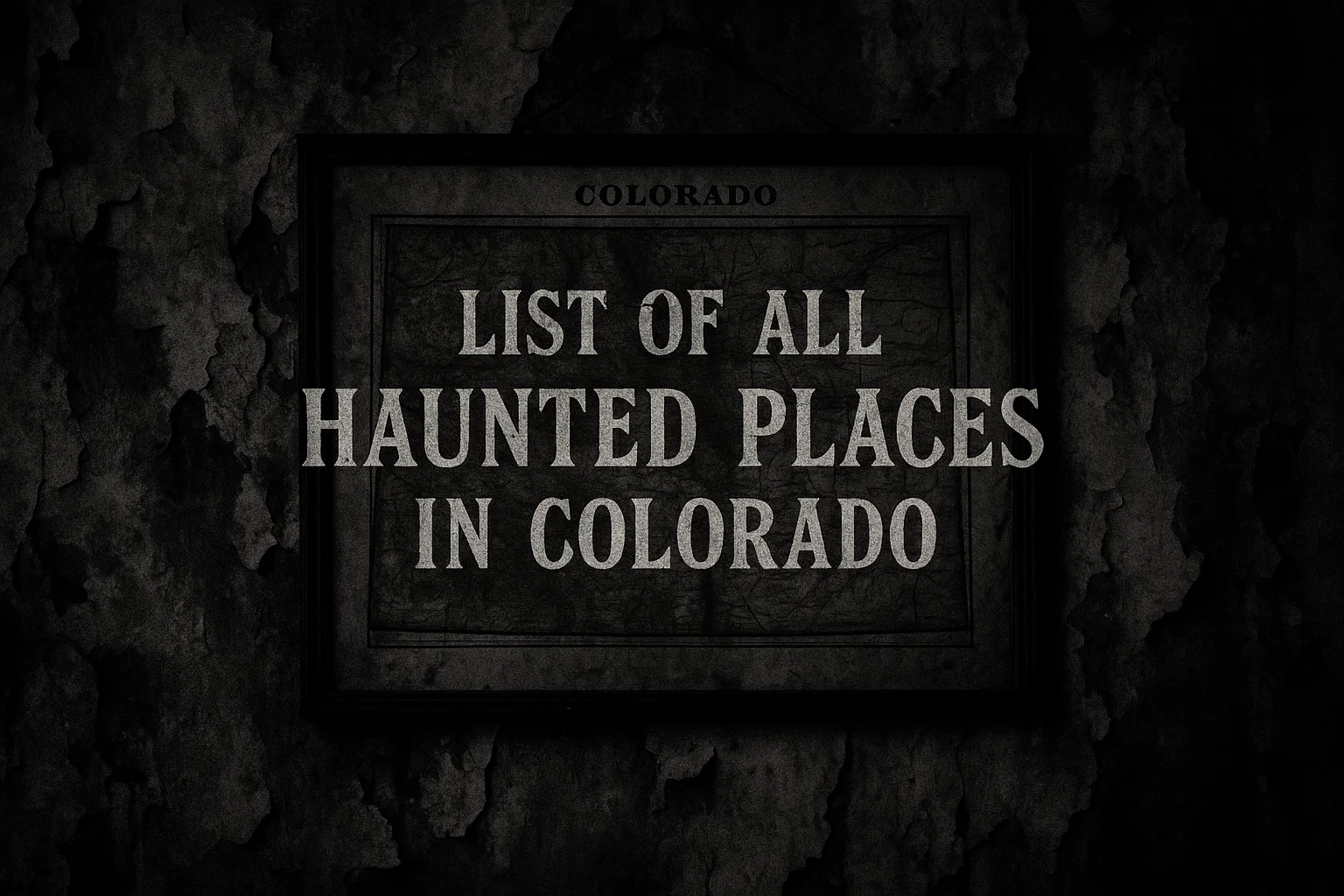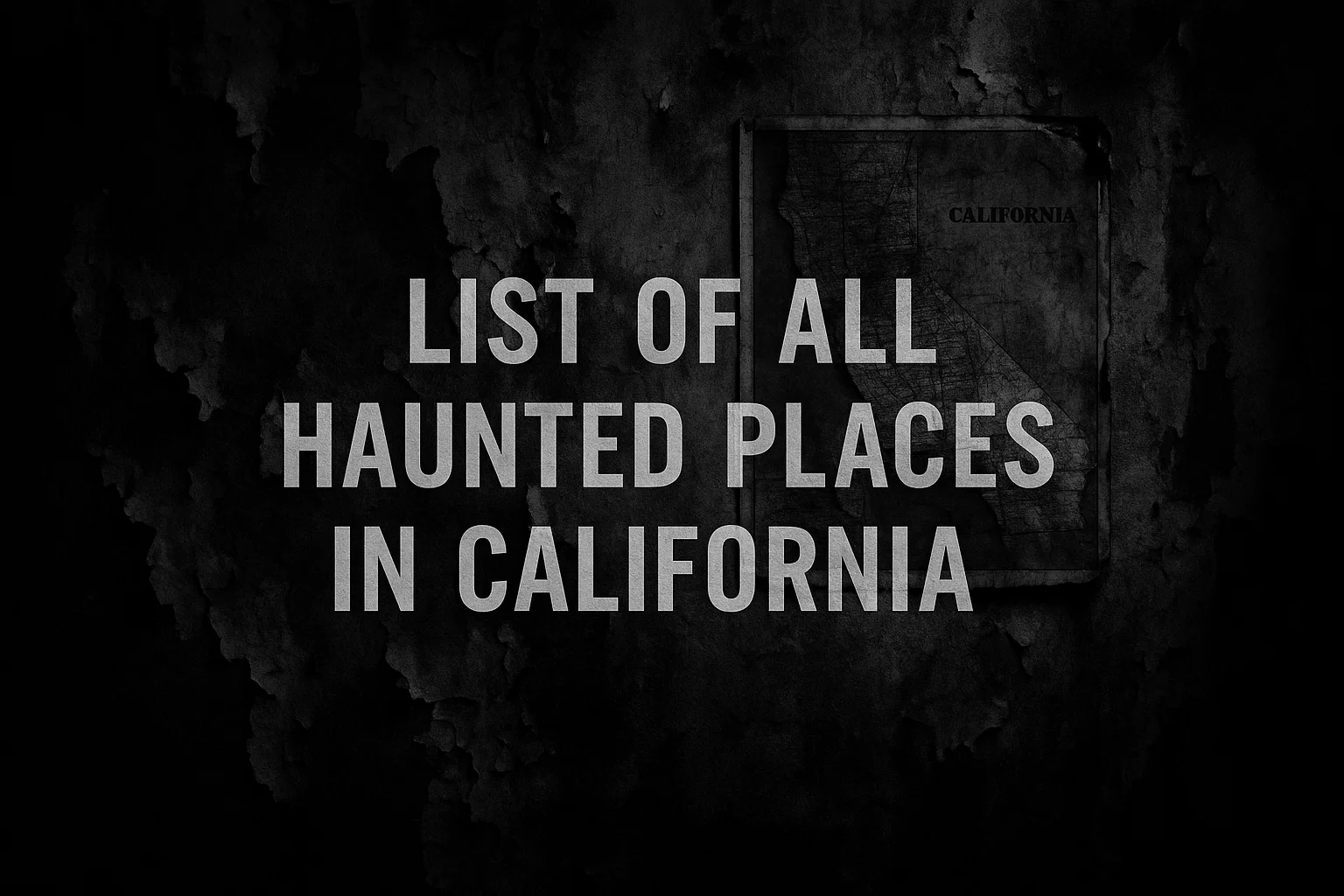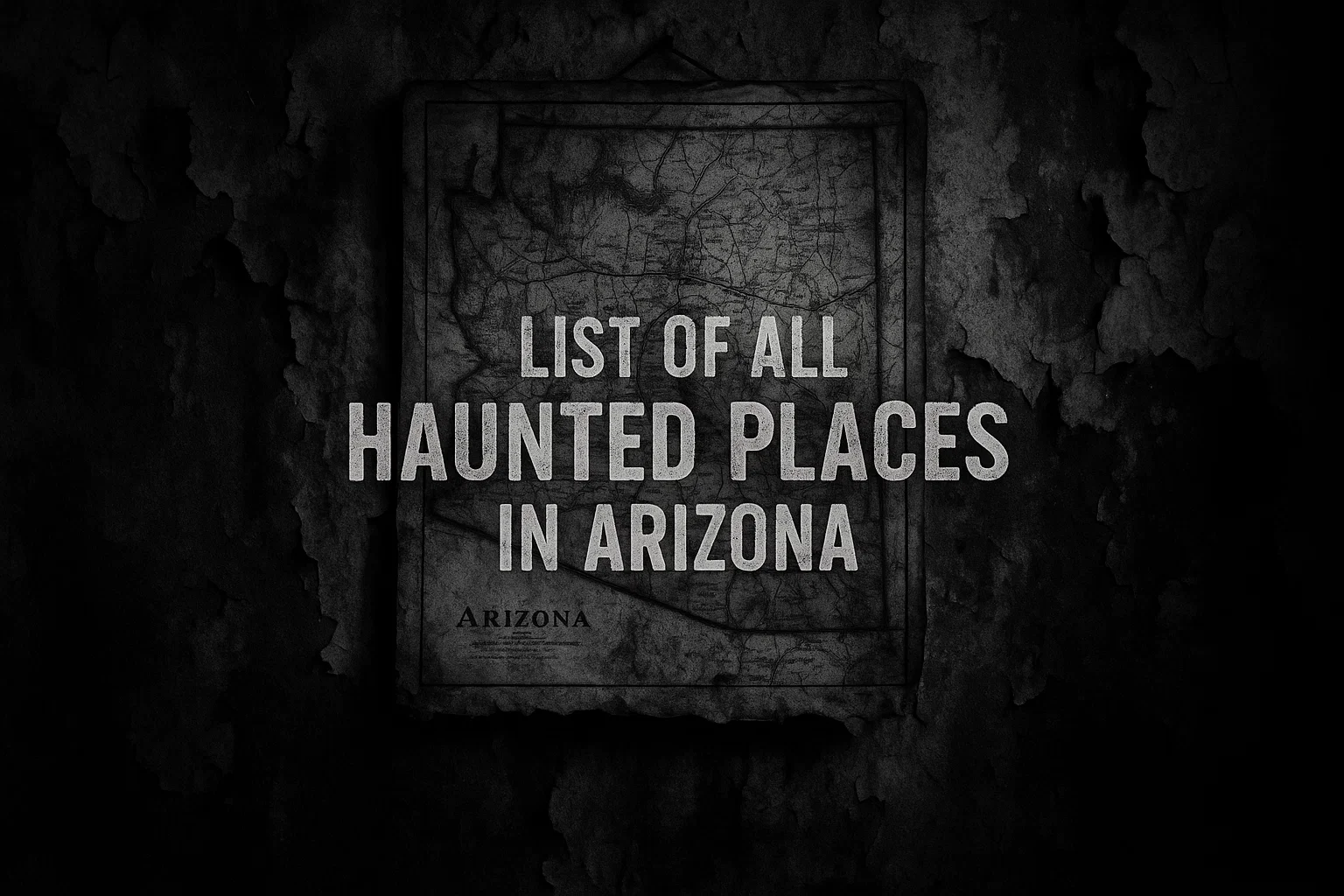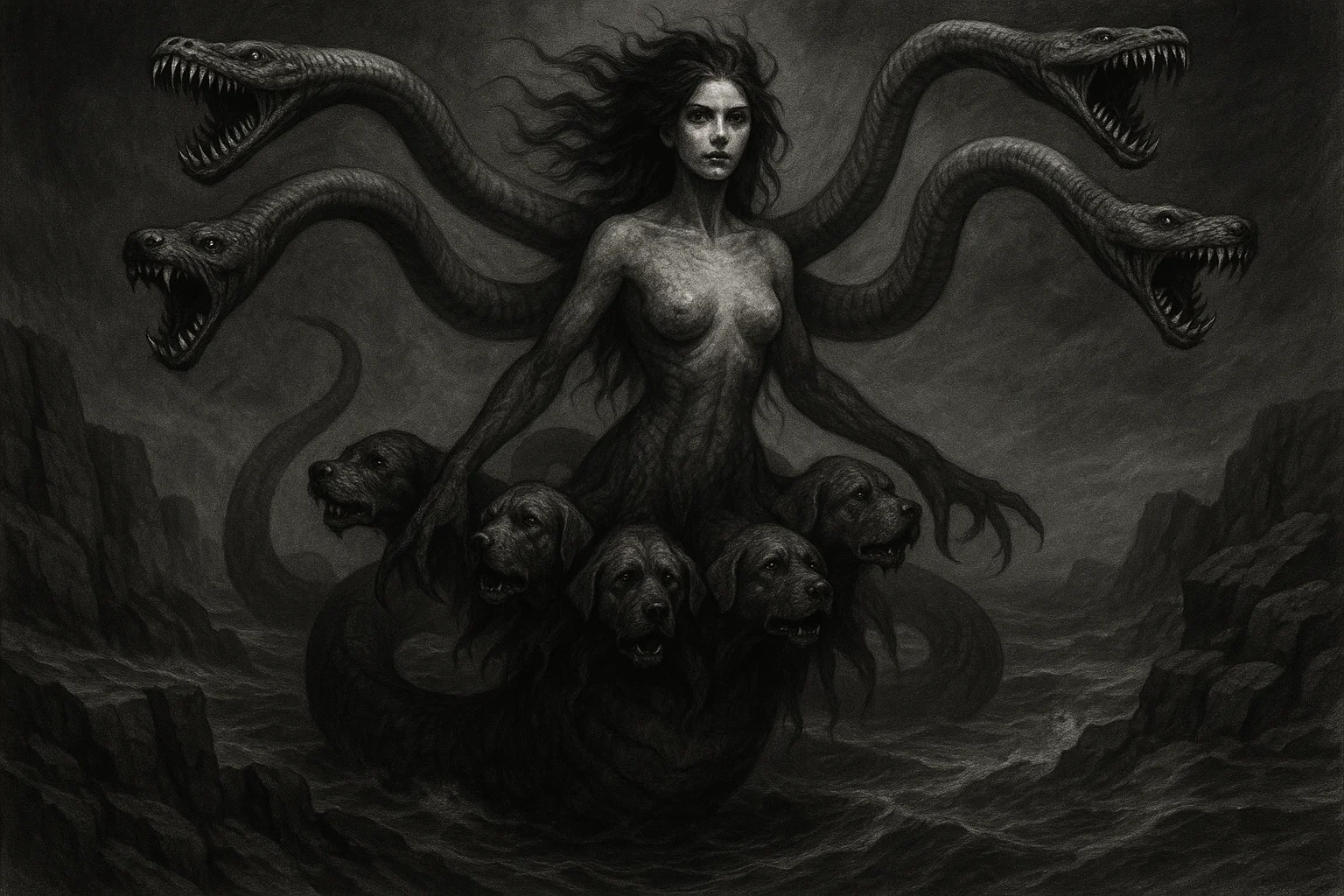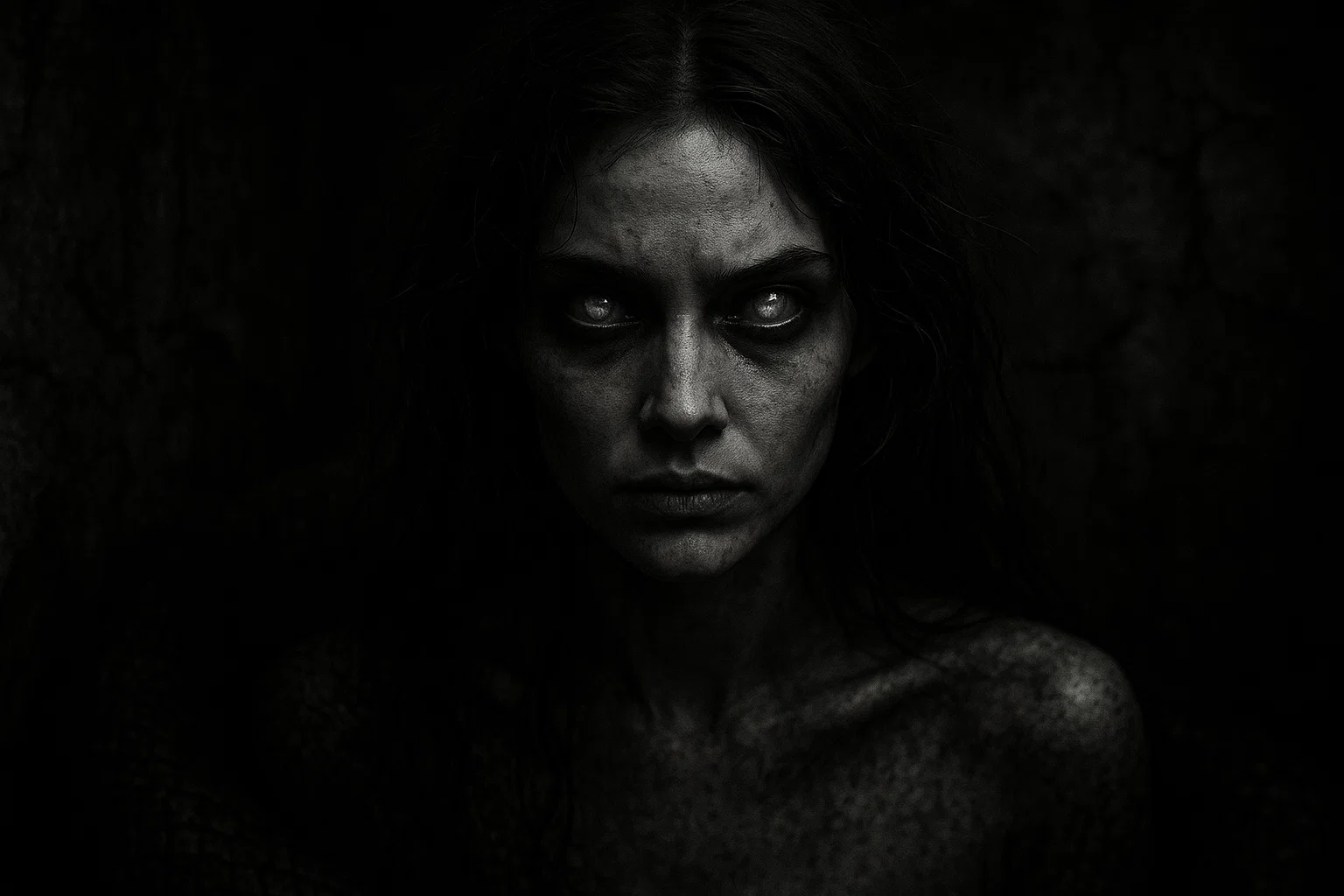Arizona’s storied past, marked by mining booms, Wild West shootouts, and tragic losses, has given rise to numerous haunted places in Arizona that continue to captivate visitors and paranormal enthusiasts.
From the Jerome Grand Hotel, where the echoes of 9,000 hospital deaths manifest as spectral nurses and moving objects, to the O.K. Corral in Tombstone, where ghostly cowboys replay their fatal 1881 gunfight, these sites are bound by dark histories of violence, disease, and heartbreak.
Each location, whether the Copper Queen Hotel with its heartbroken spirit, Julia Lowell, or the Yuma Territorial Prison’s torment-filled Dark Cell, holds tales of apparitions, disembodied voices, and unexplained phenomena tied to real events like suicides, murders, and industrial disasters.
Dive into these 15 most haunted places in Arizona to uncover the chilling stories and restless spirits that linger in the desert’s shadows, inviting the curious to explore their mysterious legacies.
Summary
Jerome Grand Hotel, Jerome
The first entry in our list of the most haunted places in Arizona is the Jerome Grand Hotel. The hotel was originally constructed in 1926 as the United Verde Hospital to serve the mining community of Jerome, Arizona, and remained in operation until 1950. The hotel is estimated to have been the site of approximately 9,000 deaths due to mining accidents, respiratory illnesses like tuberculosis and silicosis, and other medical emergencies common in the hazardous copper mining industry.
The building stood vacant for decades, during which a caretaker reportedly died by suicide in the 1980s.
In 1935, a maintenance engineer was fatally crushed in the hotel’s Otis elevator, an incident that has fueled reports of mechanical malfunctions and shadowy figures near the shaft.
Alleged paranormal phenomena include sightings of apparitions resembling nurses and patients in period attire, disembodied cries and moans echoing through corridors, and objects such as medical equipment or furniture relocating without explanation, particularly in Room 32, which is associated with intense activity.
These disturbances are often linked to the hospital’s history of suffering, with guests and investigators describing cold spots and the sensation of being watched in areas where surgical procedures and end-of-life care once took place.
Copper Queen Hotel, Bisbee
The Copper Queen Hotel is the next entry in our list of the most haunted places in Arizona.
Built in 1902 by the Phelps Dodge Corporation to accommodate investors and dignitaries in the booming copper mining town of Bisbee, the Copper Queen Hotel has a history intertwined with the perils of early 20th-century mining life, including fatal accidents and labor disputes that claimed numerous lives in the surrounding area.
One prominent tragic event involves Julia Lowell, a sex worker who reportedly died by suicide in Room 315 after a romantic rejection, her story becoming central to the hotel’s lore. Another spirit is said to be that of a young boy named Billy, believed to have drowned in the nearby San Pedro River around 1910, contributing to accounts of childlike disturbances.
Reports of hauntings include apparitions of Julia in a white gown appearing in mirrors or at bedside, accompanied by sighs and cold touches. At the same time, Billy’s presence manifests as laughter, moving objects like toys, and rumpled bed sheets.
Additionally, an elderly bearded man in a top hat has been sighted in the hallways, sometimes with the scent of cigar smoke, evoking the hotel’s Prohibition-era past of illicit activities and sudden deaths.
You May Also Like: The Complete List of All Haunted Places in Alabama
Hotel Monte Vista, Flagstaff
Opened in 1927 as a community-funded establishment along Route 66, the Hotel Monte Vista in Flagstaff quickly became a hub for travelers and celebrities, but its history includes violent incidents such as the murder of two prostitutes in Room 306 during the 1940s, when they were allegedly thrown from the window by a client in a fit of rage.
Another dark chapter involves a bellboy who fell to his death in an elevator shaft in the hotel’s early years, and rumors of illicit activities in the basement speakeasy during Prohibition, including abandonments and possible infanticide.
Why Do So Many Successful People Secretly Wear a Little Blue Eye?
Limited time offer: 28% OFF. For thousands of years, the Turkish Evil Eye has quietly guarded wearers from the unseen effects of jealousy and malice. This authentic blue glass amulet on a soft leather cord is the real thing – beautiful, powerful, and ready for you.
Paranormal reports center on the “Phantom Bellboy,” whose knocks and offers of service are heard on the fourth floor, while Room 306 is associated with vengeful spirits targeting male guests through choking sensations and slamming doors.
Guests have also described hearing infant cries from the basement, linked to the era’s social stigmas, and sightings of a man hanging meat in Room 305, evoking a butcher’s suicide in the 1980s.
Most Haunted Places in Arizona – Hotel San Carlos, Phoenix
The Hotel San Carlos, completed in 1928 as Phoenix’s first high-rise with modern amenities, was erected on the site of the city’s original 1874 schoolhouse, where several children reportedly drowned in an underlying well during epidemics, laying a foundation of early tragedy.
Just weeks after opening, 22-year-old Leone Jensen leaped to her death from the rooftop on May 7, 1928, reportedly due to a failed romance or illness, leaving a note that has become part of the hotel’s documented history.
Alleged hauntings prominently feature Jensen’s spirit, described as a woman in white who appears on the third floor and in stairwells, accompanied by cries and icy touches on guests. Playful youthful apparitions, including giggling voices and handprints on mirrors, are attributed to the drowned schoolchildren.
At the same time, a spectral janitor in overalls has been sighted in the basement, mopping invisible spills.
Hassayampa Inn, Prescott
No list of the most haunted places in Arizona is complete without the Hassayampa Inn. Built in 1927 as a luxury retreat in Prescott, the Hassayampa Inn’s history is marked by the alleged suicide of a newlywed named Faith Summers in Room 426, who hanged herself after her husband abandoned her during their honeymoon, an event rooted in the era’s social and economic instabilities.
The inn’s Prohibition-era basement speakeasy also hosted illicit gatherings that occasionally ended in violence, including brawls and overdoses amid the town’s Whiskey Row excesses. Reports of paranormal activity focus on Faith’s apparition in a bridal gown wandering the lobby and upper halls, leaving scents of wilted roses and causing beds to depress under unseen weight.
Other sightings include a boy in the laundry area and a “Night Watchman” figure, with guests noting flickering lights and doors locking inexplicably, phenomena linked to the inn’s 26 reported murders and its role in Prescott’s turbulent frontier past.
Yuma Territorial Prison, Yuma
Operating from 1876 to 1909, the Yuma Territorial Prison housed over 3,000 inmates under harsh desert conditions, resulting in 111 documented deaths from diseases like tuberculosis, failed escapes, riots, and punishments in the infamous Dark Cell.
This solitary confinement pit drove some prisoners to madness. The 1902 riot alone claimed five lives, while wildlife infestations and extreme heat exacerbated the suffering.
Alleged hauntings include screams and chain rattling from the Dark Cell, attributed to inmates like John Ryan, as well as sightings of a girl in a red dress who pinches visitors, possibly linked to drownings during the site’s Depression-era use as a homeless shelter.
Shadowy figures shambling the yard and whispers from the cemetery, where 104 unclaimed bodies lie, further contribute to reports of orbs and cold spots, reflecting the prison’s reputation as a “Hellhole of the West.”
You May Also Like: Why the Jemison-Van de Graaff Mansion Haunting Terrifies Visitors
Orpheum Theatre, Phoenix
Next in our list of the most haunted places in Arizona is the infamous Orpheum Theatre, opened in 1929 as a vaudeville venue in Phoenix.
The place has a history punctuated by accidents, including the fatal fall of an usherette named Mattie down the balcony stairs in the 1940s and a stagehand’s death from a falling chandelier in the 1920s. A pianist reportedly collapsed mid-performance in the 1930s, adding to the site’s tragic undercurrents amid the economic hardships of the time.
Paranormal accounts describe Mattie’s apparition in a uniform gliding through the upper tiers, humming tunes, alongside slamming doors and unbidden organ music from the Mighty Wurlitzer, linked to the deceased pianist.
Visitors report footsteps on the stage and flickering lights, evoking the theatre’s misfortunes of the vaudeville era.
Rosson House, Phoenix
Built in 1895 as a Victorian residence for Dr. Roland Rosson in Phoenix, the Rosson House later served various purposes, including as a museum where caretaker Charles “Speedy” Garvin was murdered in a 1981 parking dispute, marking a violent modern chapter.
This alleged haunted house in Arizona was struck by many tragedies, including the death of a young Garvin family member from illness, amid the home’s bordello rumors in the 1920s. Alleged hauntings involve Garvin’s spirit slamming doors and rearranging artifacts, as well as the sounds of children’s laughter from the nursery and unexplained heat emanating from the parlor fireplace.
Guests report shadows, whispers, and objects vanishing, tied to the house’s evolution through financial woes and restorations.
Vulture Mine, Wickenburg
Another creepy location on our list of the most haunted places in Arizona is the Vulture Mine.
Discovered in 1863 by Prussian prospector Henry Wickenburg amid the Hassayampa Mountains, the Vulture Mine became Arizona’s most productive gold mine, yielding approximately $200 million in ore over its operational lifespan, but at a tremendous human cost, with numerous fatalities from cave-ins, explosions, and vigilante justice, including the hanging of 18 ore thieves on the site’s infamous ironwood “Hanging Tree” during claim disputes and highgrading incidents.
Ever Walk Into a Room and Instantly Feel Something Watching You?
Millions have used burning sage to force out unwanted energies and ghosts. This concentrated White Sage & Palo Santo spray does the same job in seconds – just a few spritzes instantly lifts stagnation, breaks attachments, and restores peace most people feel immediately.
An 1870s smelting room blast entombed several workers alive, adding to the grim tally of deaths, while the mine’s closure in 1942 due to wartime restrictions left behind the abandoned Vulture City ghost town, a once-thriving settlement of 5,000 residents plagued by lawlessness, including murders over gold claims and Apache raids in the early years.
Reports of paranormal activity are widespread, though local historians often attribute them to tall tales and folklore. Alleged phenomena include apparitions of former miners and residents in the assay office, where shadows are seen weighing invisible ore, disembodied screams echoing from sealed tunnels as if replaying mining accidents, and tools or artifacts moving unaided (particularly near the Hanging Tree, where ghostly figures of executed criminals are said to linger, evoking the site’s violent labor conflicts and frontier justice).
The site’s haunted reputation is further fueled by accounts of poltergeist-like disturbances involving relocated objects and unexplained noises in the remnants of buildings, tied to the spirits of those who met untimely ends in the pursuit of gold.
You May Also Like: What Are the 14 Types of Hauntings? Everything You Need to Know
O.K. Corral, Tombstone
The O.K. Corral in Tombstone, originally a livery stable, gained infamy for the October 26, 1881, gunfight that unfolded in a nearby vacant lot. The conflict resulted in the deaths of Billy Clanton and brothers Tom and Frank McLaury during a 30-second exchange of approximately 30 shots between lawmen Wyatt Earp, his brothers Virgil and Morgan, Doc Holliday, and the loosely organized Cochise County Cowboys.
The aftermath amplified the site’s bloodshed, with subsequent vendettas including the ambush maiming of Virgil Earp in December 1881 and the murder of Morgan Earp in March 1882. These events spurred Wyatt Earp’s infamous “Vendetta Ride” and further killings, contributing to Tombstone’s reputation as a lawless boomtown during its silver mining peak.
Alleged hauntings at the site feature apparitions of cowboys in period attire, including a tall figure in a black frock coat possibly resembling Wyatt Earp or one of the participants, disembodied sounds of gunfire, spurs jingling, and phantom horse whinnies, as well as cold spots marking the locations where the McLaury brothers and Clanton fell.
The O.K. Corral has become one of the most haunted places in Arizona after visitors started reporting strange noises, mysterious shadows, sensations of unease, and distant gunshots.
Boot Hill Cemetery, Tombstone
Established in 1878 as Tombstone’s primary burial ground, Boot Hill Cemetery served as the final resting place for over 250 individuals by 1884. Many of whom met violent ends through gunfights, hangings, mining accidents, and diseases such as cholera and smallpox, including the previously mentioned haunted location, the O.K. Corral.
Corral victims Billy Clanton, Tom McLaury, and Frank McLaury, as well as the five perpetrators of the 1883 Bisbee Massacre, who were executed in 1884 amid a public spectacle.
The cemetery’s segregated sections, with unmarked graves for Chinese immigrants, paupers, and marginalized groups, highlight the town’s discriminatory practices and social hardships during its silver boom. At the same time, humorous epitaphs on wooden markers—such as “Here lies Lester Moore, four slugs from a .44, no Les, no more”—highlight the frontier’s macabre wit.
However, some gravesites have been falsely marked over time by operators for tourism purposes. Paranormal reports are numerous, including strange lights hovering over graves, disembodied voices whispering epitaphs or pleas, and silhouettes of cowboys manifesting at twilight.
A notable 1996 photograph purportedly captures a ghostly figure in 1880s attire amid modern tourists. This image has sparked debate but bolstered the site’s haunted lore.
Other alleged phenomena include poltergeist activity, such as rocks moving unaided, sightings of Billy Clanton’s spirit near his plot, and apparitions of a “Lady in Red,” possibly a victim of violence, alongside faint screams and strange sounds that evoke the cemetery’s history of sudden, violent deaths.
You May Also Like: Peter Stumpp: The Real Werewolf?
Gadsden Hotel, Douglas
The Gadsden Hotel is another strong contender for the title of the most haunted place in Arizona.
First constructed in 1907 as a luxurious accommodation for mining executives and travelers in the border town of Douglas, the Gadsden Hotel was rebuilt after a devastating 1928 fire that destroyed much of the structure, leaving only the marble staircase, pillars, and elevator intact, an event tied to the era’s electrical hazards and contributing to rumors of lingering unrest from the blaze.
The hotel’s dark history is marked by its ties to the Mexican Revolution and the border conflicts that followed.
The most notable one is the legend of Pancho Villa riding his horse up the iconic marble staircase during a 1913 raid, leaving a chip in the seventh step that remains visible today. Other stories mention multiple deaths from falls (such as a young boy plummeting from a third-floor window in the 1920s) and violence associated with Prohibition-era bootlegging and overdoses in its speakeasy.
Hauntings are well-documented here. The staff and guests still report numerous supernatural encounters, including a headless apparition wandering the basement—possibly linked to tales of a bandit’s severed head containing a treasure map—and the spirit of the fallen boy, who pinches or giggles at visitors in Room 333.
Additional sightings feature a cowboy figure slumping on lobby couches, scents of cigar smoke without a source, and guttural Spanish curses echoing in hallways, phenomena attributed to the hotel’s tumultuous past of fires, revolutionary skirmishes, and illicit activities that claimed lives.
Most Haunted Places in Arizona – Hotel Congress, Tucson
Built in 1919 as an upscale lodging for railroad passengers in Tucson, the Hotel Congress endured a catastrophic 1934 fire sparked by faulty wiring in stored linens. The fire not only exposed the hiding John Dillinger gang—leading to their arrest—but also trapped and injured guests, with smoke inhalation and panic contributing to the chaos amid the building’s history as a Prohibition speakeasy rife with murders, suicides, and gang-related violence.
Room 242, known as the “Suicide Room,” was the site of a 1993 incident where an emotionally unstable woman died by suicide following a high-stress police standoff involving a SWAT team. The event was previously misdated in some accounts, but was confirmed to have occurred in the bathroom during negotiations.
Alleged apparitions include the woman in white from Room 242. Her ghost is reported to sit on beds, stare at sleepers, or attempt physical contact, often accompanied by inexplicable door locks and strange noises, such as whispers or footsteps.
Other hauntings feature the spirit of a long-term World War II veteran resident named Vince, whose meticulous footsteps and clinking porcelain echo in Room 220, childlike giggles from Depression-era orphans temporarily housed post-fire, and residual coughs or cries mimicking the 1934 blaze’s victims, with activity reportedly increasing during quiet periods and documented by professional ghost hunters.
You May Also Like: My Wife Likes To Play With Me | Horror Story
The Surgeon’s House, Jerome
Speaking of the most haunted places in Arizona, the Surgeon’s House is a strange one.
Constructed in 1917 as a Spanish Colonial-style residence for Jerome’s chief surgeon at the United Verde Copper Company, The Surgeon’s House was perched on Hospital Hill overlooking the town’s hospital. Here, thousands perished from mining accidents, respiratory diseases like silicosis, and epidemics (such as the 1918 influenza pandemic that ravaged the community).
The home initially served as housing for nurses working at the adjacent United Verde Hospital, later transitioning through various owners, including mining executives. It has been listed on the National Register of Historic Places since 1966, reflecting its role in Jerome’s copper boom era, marked by industrial hazards and high mortality rates.
Why is the Surgeon’s House featured in our list of the most haunted places in Arizona? Reports of paranormal activity describe a “White Lady” apparition, believed to be a nurse who died in a 1930s surgical mishap, gliding through hallways with accompanying scents of medicinal ether or antiseptics, evoking the site’s medical tragedies.
Additional sightings include the sounds of children’s giggles emanating from the attic, linked to orphans who succumbed to illnesses while temporarily housed there, and a ghostly couple dancing in the parlor to faint jazz music, remnants of 1920s social gatherings held to uplift the mining town’s morale amid widespread death and hardship.
Oliver House, Bisbee
The final entry in our list of the most haunted places in Arizona is the Oliver House.
Built in 1909 as a fireproof brick boarding house by mining magnate Henry Oliver and his wife Edith to accommodate executives of the Calumet & Arizona Mining Company in Bisbee, the Oliver House is linked to at least 26 documented deaths (predominantly murders stemming from the town’s volatile mining culture) including the 1917 double homicide in the Blue Room where a policeman fatally shot his adulterous wife and her lover in a jealousy-fueled confrontation.
Other tragic events include the 1908 shooting of boarder Nathaniel “Nat” Anderson in Room 13 over a gambling debt, and a 1932 rampage by a disgruntled miner that resulted in 12 deaths during a payroll dispute.
Hauntings are centered on Nat Anderson’s apparition appearing on the staircase or in Room 13 with the sound of jingling coins, whispers of betrayed lovers in the parlor replaying their fatal arguments, and sudden gunshots accompanied by the scent of blood or cordite, particularly on the second floor, which is considered a hotspot for activity.
Guests also report doors and windows closing unaided, feelings of being watched, and the spirit of an 8-year-old boy named Billy, believed to have drowned nearby and manifesting through playful disturbances (like scattered objects), adding to the property’s reputation as a site where Bisbee’s jealousies, feuds, and untimely ends persist.

